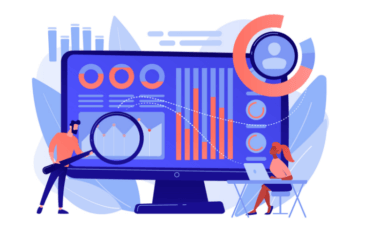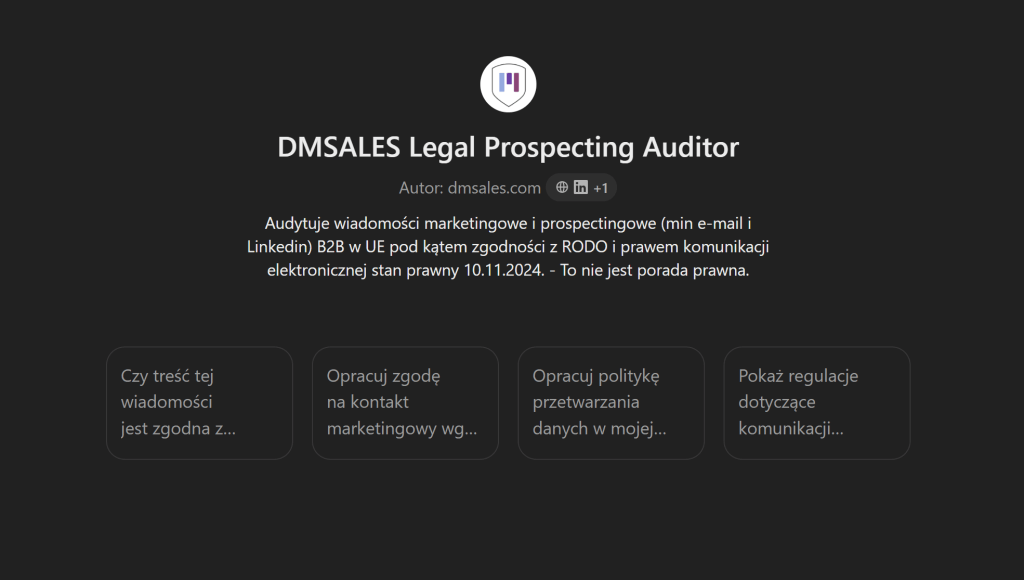
Implementing AI in Prospecting – How to Start and Boost Your B2B Sales Efficiency
Implementing AI in Prospecting – How to Start and Boost Your B2B Sales Efficiency Did ...

Prospecting is an active process of gathering, analyzing, and interpreting information about potential clients to boost the efficiency and effectiveness of multichannel communication. Its primary goal is to gain deep insights into clients and the market, enabling active identification of sales opportunities, discovering new prospects, and understanding their needs and preferences. Prospecting also involves actively building trust, visibility, and brand association, leading to relationships based on mutual respect and values.
To effectively acquire clients through prospecting, remember:
In 2025, consider implementing an Inbound-led Outbound approach, which involves gathering leads, qualifying them, personalizing communication, and presenting offers that meet the client’s needs. This approach can significantly increase the ROI of outbound efforts by targeting the real needs of potential clients rather than casting a wide net at random. Here’s how you can apply these 7 best practices:
The first step in effective prospecting is understanding where you can reach your potential clients and which communication channels already build your recognition. In practice, this means identifying spaces where you are visible and have the chance to capture the audience’s attention.
Examples include:
Define your Ideal Customer Profile (ICP) by analyzing people already in your network, LinkedIn connections, conference attendees, or industry group members. Segmenting your audience based on interest signals helps you focus your sales efforts on those who genuinely need your solutions.
Examples of key sales signals:
Using tools like DMSales.com helps you identify and monitor these signals, allowing you to tailor your messages to individual needs for better efficiency.
Getting consent for contact is essential in prospecting, especially in countries like Germany, Denmark, the Netherlands, Austria, or Italy, where explicit marketing consent is required. Tools like DMSales.com’s Legal Prospecting Auditor make this process compliant and straightforward.

If you collect contacts through your website, integrate systems that ensure an immediate response to inquiries from potential clients, regardless of the communication channel.
In 2025, multichannel contact is key, using email, LinkedIn, SMS, and other methods. With integrated communication, you can better manage client relationships, enhance brand awareness, and reach clients where they spend time, increasing the impact of prospecting.
Analytics tools help track responses to your messages. Real-time monitoring allows you to adjust strategies and focus on actions with the highest impact, leading to more precise and effective outreach.
Prospecting should be informative and value-driven, not overly sales-oriented. Using templates tailored to specific audience segments keeps communication consistent and professional, minimizing the risk of messages being perceived as unwanted sales pitches.
Every marketing message should include an option to unsubscribe or opt-out, in compliance with GDPR and national electronic communication regulations. Transparency builds trust and professionalism.
In Conclusion
B2B prospecting, conducted in compliance with the law, becomes an extremely effective client acquisition tool when supported by best practices and tools for consent management, segmentation, and personalized communication. Properly conducted prospecting is both efficient and safe, building trust and a professional reputation while enhancing sales outcomes.
If you’d like further assistance in building a system that saves time and brings more sales opportunities, feel free to discuss it in a consultation: https://dmsales.com/spotkanie-dmsales/.
Przeczytaj więcej z tej kategorii